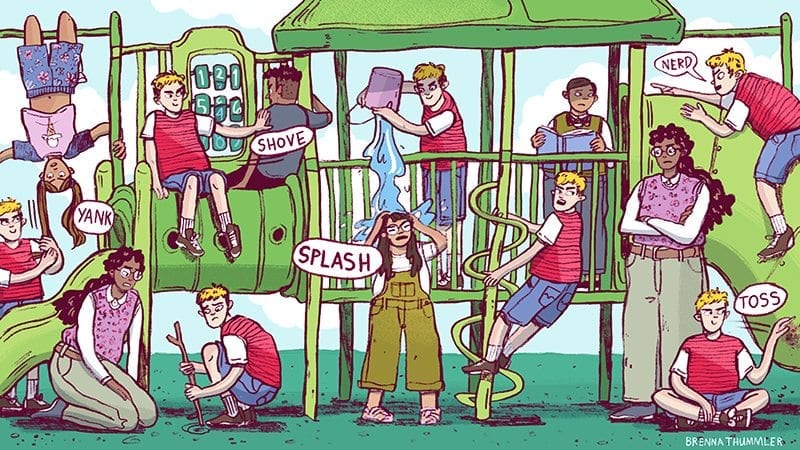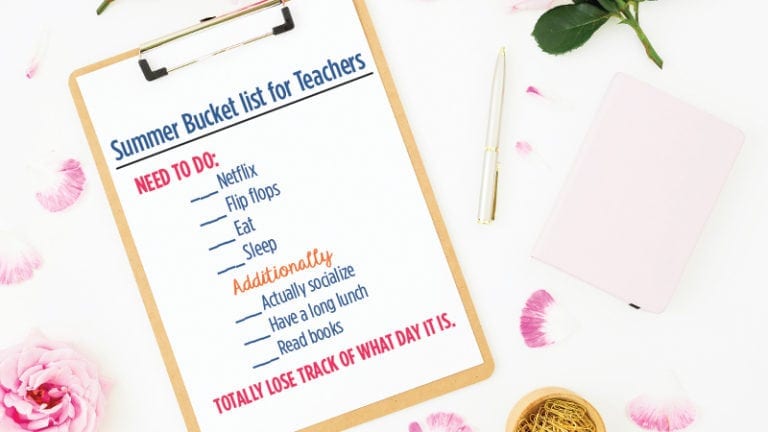Dear Principal Hotline,
I have a seven-year-old second grade girl in my school who has autism. She is also smart and creative. She adds joy and intelligence to her class 70 percent of the time. However, at least twice a week, she also loses control—yelling at teachers and her peers, tearing charts off the walls and knocking chairs. When this happens, we’ve chosen to have the whole class leave the room until she calms down, rather than have a trained staff member contain her physically. It was a tough behavior management call. We were affecting the many instead of the one. But now, we’re down to about a five- to 10-minute turnaround time to restoring calm. .
That said, I’m already getting calls from parents requesting that their child not be in the same class as this little girl next year. How can I consider one student’s needs when parents and other students are appropriately concerned her needs are negatively impacting others in the classroom?
Sincerely,
Proud Principal of THAT Kid
Dear Proud Principal of THAT Kid,
There’s a lot to unpack here, so I’m going to start by sharing my experience as a third grade student. I cried. A lot. Sometimes I screamed while I was crying. I spent a lot of time singing and kicking my desk. Sometimes, when we had to write on newsprint for our rough drafts, the physical discomfort was—and still is—indescribable. I was, in short, a student with special needs. Specifically, I had sensory processing issues and spectrum behavior during a time when girls were almost never diagnosed.
So, how did my wonderful third grade teacher handle this without an FBA, BIP, 504, IEP, or direct administrative support inside her classroom?
Her behavior management system included using the experience as a teaching moment for everyone involved.
“Some people are super sensitive,” she said to the class one day. She explained what that meant, then opened it up to questions. Some students, myself included, knew exactly who she was talking about, but she never said that any of what she was explaining applied to one individual. She presented the information, hoping she could equip every student in the class with a better understanding of empathy.
The behaviors in the situation you’re talking about are more extreme, but I do think you can take a similar approach. Parents are concerned. I understand that. You understand that. The student probably understands that and I’m sure her parents understand that. I’m sure they are simultaneously mortified and concerned their daughter is perceived as a bother to her peers and is being ostracized as a result.
One solution may be an open-house forum for parents in which you discuss special needs programs, behavior management, and the various safeguards your programs use that keep all of your students safe. Inviting a current parent to speak would be problematic. Perhaps you can reach out to former (now adult) special ed students or parents who can attest to the inner pain that causes these sorts of behaviors.
It’s a lot easier to accept that a student is having outbursts in the classroom if you also understand the student isn’t simply being “naughty” or “a brat.” It changes everything once you understand this is a student who has been triggered by something and is in some sort of pain.
You might have a hard time justifying the time and resources for holding this sort of town hall/sensitivity training for parents, but remember this is information they’ll have for the rest of their lives. It’s information that may help them with their younger child who hasn’t started school yet or a grandchild or niece who is struggling to be “normal.” It could help them understand their own childhood in retrospect. Context is everything.
No matter how you handle this, you’re probably going to struggle keeping some parents happy. There’s no situation in which 100 percent of the people are happy 100 percent of the time.
Compared to 30 years ago, you have an advantage. There are (hypothetically, if not in practice) more resources and better supports for students who require them. As a profession, we have a greater understanding of the underlying disorders and illnesses which may cause these behaviors and, in many situations, we are able to provide empirically tested interventions.
Let’s go back to my experience as a super-sensitive, disruptive student with “strong opinions” and “satisfactory” behavior marks, all of which were elementary-school code for, Your child is a nightmare. Send help. You may be wondering how I felt knowing my teacher was giving a speech about me. It felt awkward but also wonderful. I was relieved knowing she understood I wasn’t being annoying or difficult. I was grateful she gave me a name for how I felt.
Keep working on behavioral interventions, following district protocol for behavior management, and helping your student build successful coping strategies. Also, work with your community to make the world easier for any humans who require a little extra. You’ll make this planet just a bit better than it was.
Sincerely,
THAT Kid, whose desk emptied its contents onto the floor—daily
Each week, our brave school leadership expert will answer your toughest questions about the daily adventures and challenges we all face as we strive to make our schools great places for kids to learn. Have a question? Email it to principalhotline@schoolleadersnow.com.

